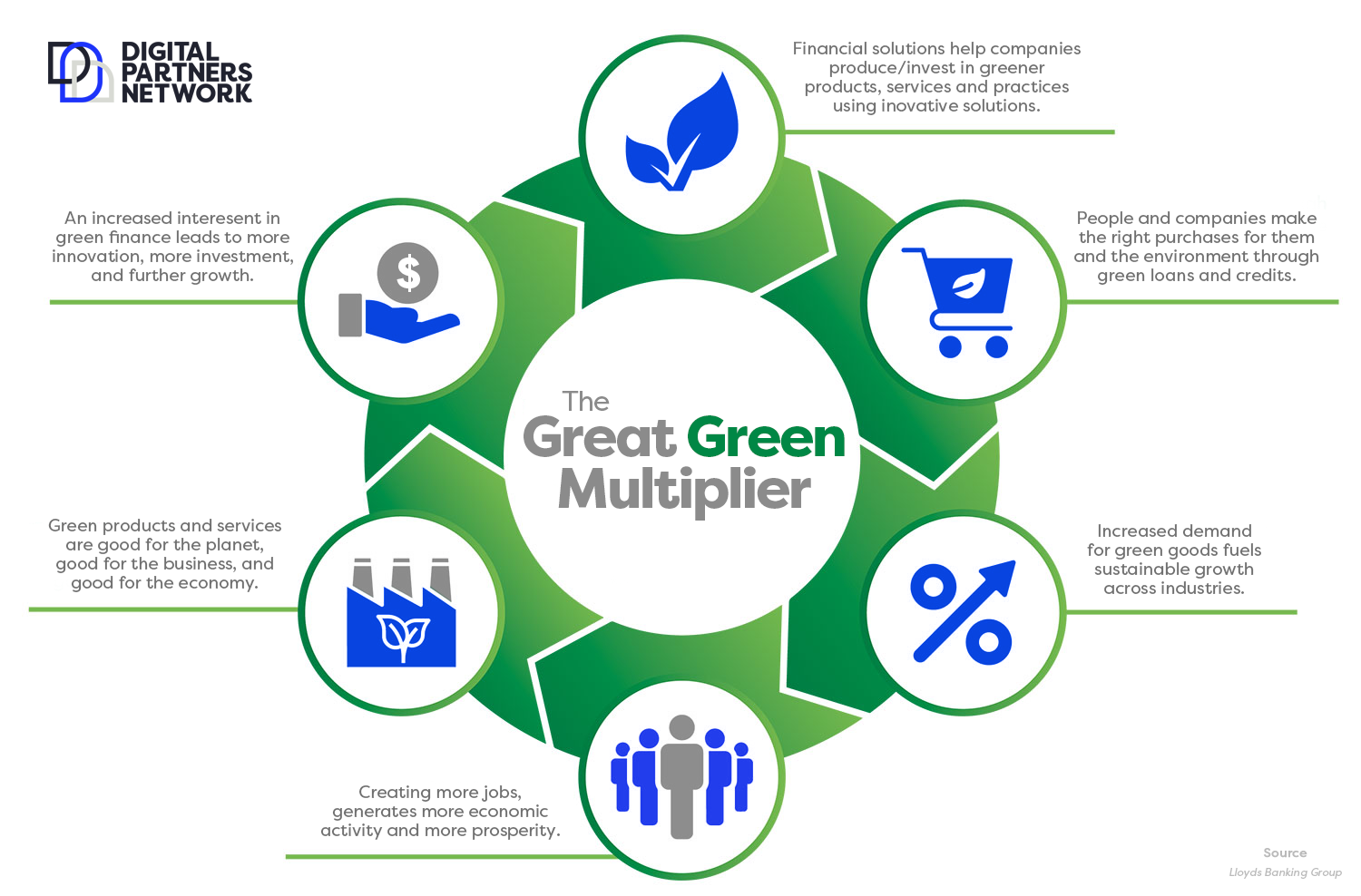Simply, green financing is a loan or investment that supports environmentally-friendly activity, such as purchasing environmentally-friendly goods and services or building environmentally-friendly infrastructure.
Making the necessary lifestyle and business changes to become greener can be expensive, so green financing can often include incentives that make it easier to deal with the cost of switching to electric vehicles or improving the energy efficiency of your home, for example. So it can help people and companies make good purchasing and investment decisions for both themselves and the environment.
Green finance has well and truly entered the mainstream. As risks associated with environmentally-damaging products and services increase, over time we can expect purchasing and investing in green alternatives to become the norm.
Banks are increasingly making more green finance available and accessible to fund green projects such as wind and solar farms, and to invest in businesses themselves to help them become greener. Banks therefore play an essential role in helping people and businesses to access the money to support environmentally-friendly activity.
The importance of green financing in supporting the transition to a low carbon economy has been recognised by the recent COP26 in Glasgow this November, a UN conference convening 190 world leaders to agree plans to protect the planet. This follows on from COP21 in Paris in 2015, where governments agreed to limit global warming to well below 2 degrees Celsius – preferably to 1.5 degrees – compared to pre-industrial levels.
Funding sustainable development
For the United Nations, green financing plays an important role in delivering several of its Sustainable Development Goals. Its Environment team is already working with public and private sector organizations in an attempt to align international financial systems to the sustainable development agenda.
Some of the activities UN Environment is involved in include helping countries re-engineer their regulatory frameworks – so that green borrowing becomes compliant, for example – and helping steer public sector planning in a more environmentally friendly direction. Clean sources of energy can be brought to fruition through the right combination of planning consent, strategic priorities and availability of capital. Such projects could be given preferential treatment to make them a more attractive option than, for example, fossil-fuel derived energy infrastructure.
Typical projects that fall under the green finance umbrella include:
- Renewable energy and energy efficiency
- Pollution prevention and control
- Biodiversity conservation
- Circular economy initiatives
- Sustainable use of natural resources and land
What’s the difference between climate finance and green finance?
Climate finance, as discussed in COP26, is a subset of green finance. It refers primarily to public finance, or where developed countries provide financing through a variety of sources, that promotes multilateral efforts to combat climate change. Green finance is a wider term that encompasses all financial flows that support sustainable environmental objectives.
Why is green financing important?
In a nutshell, green finance can provide economic and environmental benefits to all, and needs to be managed to ensure there is a just transition to a low carbon society.
Socially, green financing expands the number of individuals and businesses who can gain access to environmentally-friendly goods and services, especially for the vulnerable and marginalised. This makes the transition to a low carbon society more equal, creating more socially inclusive growth. It means more money is invested into businesses to help them become greener. This can help businesses to grow, creating jobs, reducing carbon emissions and stimulating the economy, creating a ‘great green multiplier’ effect where both the economy and environment continuously benefit. A win-win for everyone.
Current Trends in Green Finance
Green Bonds are a very good example of a current market trends. The U.S., China, and France are among the biggest issuers of these bonds, while ECB (European Central Bank) also plays a crucial role in such types of activities. It is estimated that the green bond market could go up to $2.30 trillion in the coming years.
Along with Green Bonds, carbon market instruments are also a popular tool of green financing. In addition to green tools, green financial institutions are on the rise, such as green funds and green banks.
Final Words
Green Finance, especially Green Bonds, could very well be the future of the financial sector. It will play a leading role in the march towards net-zero (minimum greenhouse gas emissions). These bonds are one of the best ways to meet the needs of environmentalism, as well as capitalism. There is, however, a need for minimum standards for this type of finance to ensure its long-term effectiveness and benchmarking of risk. Having standards and rules would help in the creation of more green finance tools.
More and more investments are driven with the objective of socially responsible investing, but these initiatives still are in need of a regulatory framework and credit rating agencies. This will help proper utilization of funds with the given objectives rather than the diversion of funds in the name of green investments.



